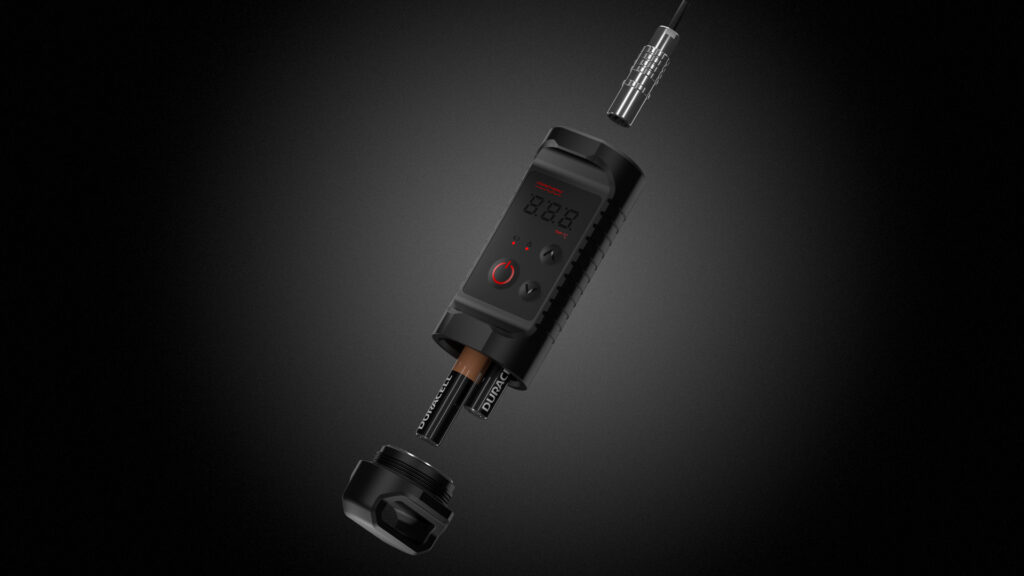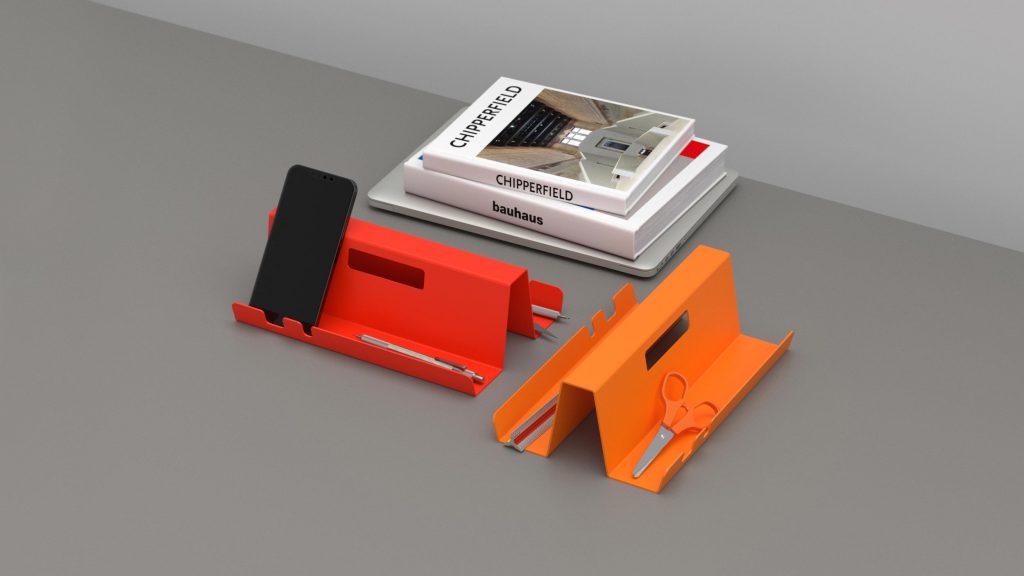What are the characteristics of industrial design?

Industrial design is a field related to exact sciences, relating to various types of industries, involving the design of utility items that combine innovative technological solutions, ergonomics, market needs and visual aspects.
Industrial design applies to virtually all subjects from many areas of life. The main task of industrial design is to facilitate everyday activities depending on the requirements and limitations of users.
What is industrial design?
Industrial design is defined as the design of new industrial designs for products intended for mass or individual production. The main goal is to develop the material culture of society by improving the aesthetics and functionality of industrially produced everyday objects.
Basic features of industrial design
Industrial design is the professional design of objects, devices, facilities and services that are used by people all over the world. Often it also involves solving technical problems. The design team requires specialists in many different fields, such as designers, 3D modeling experts, engineers, UI and UX designers, project managers, branding designers, and contractors. The diverse skills and perspectives of everyone involved in a design project are needed to achieve a result that meets the requirements and needs of future users as much as possible.

Industrial project – what is it?
The design project is responsible for both the usable and functional features of the product, as well as its aesthetics. The search for innovative solutions is therefore a continuous process, open to competencies from various fields of science and art, and not just a one-off initiative.
Designing industrial forms requires knowledge in the field of materials science, practice in the field of technology, and experience in the field of advertising graphics and visual communication. Every object we interact with every day, whether at school, at work or at home, is the result of the design process. During design, many decisions are made to create objects that facilitate everyday functioning.
Design process and concept development
A design project includes a number of stages that lead to the creation of the final product. Here are the basic elements of this process:
Definition of goals and requirements: The first step is to define the project goals and understand the requirements that the final product must meet. It includes market analysis, identification of the target group, definition of functionality, and technical limitations. The result of this stage of work is the design specification, which is a set of design assumptions.
Research and analysis: In this stage, market research is conducted, competition is analyzed and consumer trends and preferences are identified. Research may include surveys, interviews, statistical data analysis and other methods.
Conceptual design: Based on the collected information and research results, the designer creates various product concepts. The material developed at this stage includes hand sketches and preliminary visualizations presenting the concept of possible design solutions. The process uses various techniques, such as brainstorming, mind mapping and functional analysis.
Designing and prototyping as part of a design project: At this stage, the designer creates more detailed designs, using tools such as CAD (Computer-Aided Design) programs or creating 3D models. Prototypes are created to verify functionality, ergonomics, aesthetics and other aspects of the design.
Testing and Evaluation: Prototypes are subjected to various tests and evaluations. These may include durability tests, usability tests, aesthetic assessment, market research, etc. Based on the test results, the design may be further improved or changed.
Production and implementation: After the design is approved and any necessary modifications are made, production begins. The production process may include the selection of appropriate materials, technologies and tools. After production is completed, the product is introduced to the market. Both at this stage and in the next one, the project team exercises author’s supervision over the implementation in order to ensure the best possible results that will be consistent with the previously chosen directions and decisions made at the design stage.
Monitoring and improvement (also carried out as part of author’s supervision): After introducing the product to the market, its performance, customer reactions and other factors are monitored. Based on this information, modifications can be made and the design can be refined to improve the product and increase its market success.
It is worth remembering that the industrial design process may vary depending on the project, industry and specific requirements. The above elements constitute a general outline of the process, which may be adapted depending on the specific case.
What does an industrial designer do?
An industrial designer designs mainly for humans, but sometimes also for animals. A careful design designer is an empathetic person who is able to empathize with the needs of the social group or individual users for whom he or she designs. Especially since recipients may differ in culture, origin, wealth, gender, ability, age, and may have various limitations (universal design). Industrial design is done by people who are sensitive to the needs of the user, the environment and society.
The design designer is responsible for preparing comprehensive and extensive research and determining the technical, marketing and general assumptions of the project. In the initial design phase, the designer makes sketches, 3D models, and creates prototypes that allow you to test options and check which one best meets the needs of consumers.
In the next stages, the designer works with engineers, material science experts, contractors, and branding and marketing specialists. The whole process often takes many months, and sometimes years, before the final product goes on sale and consumers start using it.
The education program for design designers includes the basics of design, hand drawing, industrial design, design classes, patterns, subjects related to ergonomics, exercises developing spatial imagination, and issues of visual communication. The study program at the faculties of industrial design prepares you to run an independent design practice.
The field of industrial design is a dynamic field, changing as the needs of recipients and new technologies develop.
Why choose industrial designers from Grid?
The Grid design team can provide excellent support in the implementation of your project. Here are some reasons why you should consider working with the Grid team:
Experience and expertise: Grid design studio has many years of experience in the field of industrial design. Grid has been operating on the market continuously since 2001. The team consists of professionals with various skills and a wide range of knowledge. The design team has successfully implemented many projects for numerous industries, which proves its ability to adapt to various requirements and specifications.
Holistic approach: Grid design studio places great emphasis on the Design Thinking approach in the design process. This means that the team focuses not only on aesthetic aspects, but also on functionality, ergonomics and user experience. Cooperation with such a team ensures a comprehensive approach to the project, taking into account all factors important for the new product in its full life process.
Individual approach to the client: Grid is perfectly aware that each project is unique and requires a personalized approach. Before starting the project, design studio specialists try to thoroughly understand the client’s goals, requirements and expectations. Moreover, commitment to communication and cooperation allows you to run the project effectively and deliver solutions that meet your needs.
Cooperation with various industries: Grid design studio has experience in working with various industries: industrial, medical, electronics and food. No matter what industry you operate in, Grid will be able to provide specialized design solutions that will be tailored to your needs.
Use of modern tools and technologies: Grid follows the latest trends and innovations in the field of industrial design. Additionally, it uses advanced tools and technologies, such as advanced CAD (Computer-Aided Design) software, 3D visualization technologies as well as Rapid Prototyping. Thanks to this, we are able to create precise models and prototypes that help in testing the effects of design work.
Industrial design – examples of our work
Depending on the client’s needs, the team deals with various types of design work.
The Studio’s largest client is Es System K, a company dealing in the production of refrigeration equipment, and its daughter company – Lako, specializing in the production of lighting. In the context of these clients, the scope of permanent cooperation is very wide and includes: preparation of conceptual designs of new devices and designs, support for the Design Department during the process of product implementation and optimization, support for the marketing department by preparing visualizations for catalogs and other materials supporting promotion, support for the sales department in the form of developing non-standard solutions as well as, in cooperation with the Grid Architektura team, support in matters related to interior design, technological projects or the design and organization of trade fair stands.
Cooperation with EBS was completely different. Based on the client’s brief, a Design Specification was developed, verifying the brief and standardizing the assumptions regarding the project. The next step was to prepare an analysis of the market and design trends. Based on the findings from the Specification and the conclusions from the Analysis, a Conceptual Design was developed covering several design directions, the resultant of which later became the Design Design which was the basis for developing prototypes and then implementing products. The author’s supervision included, among others: advice during the preparation of molds for high-pressure injection technology. The result of the cooperation was the implementation of a family of modern electronic devices that are a key element of the SMART alarm system.
Choose industrial design with Grid
Grid specialists have extensive experience in the industry and can boast a wide range of skills. Are you looking for a professional design studio? Take advantage of our offer!